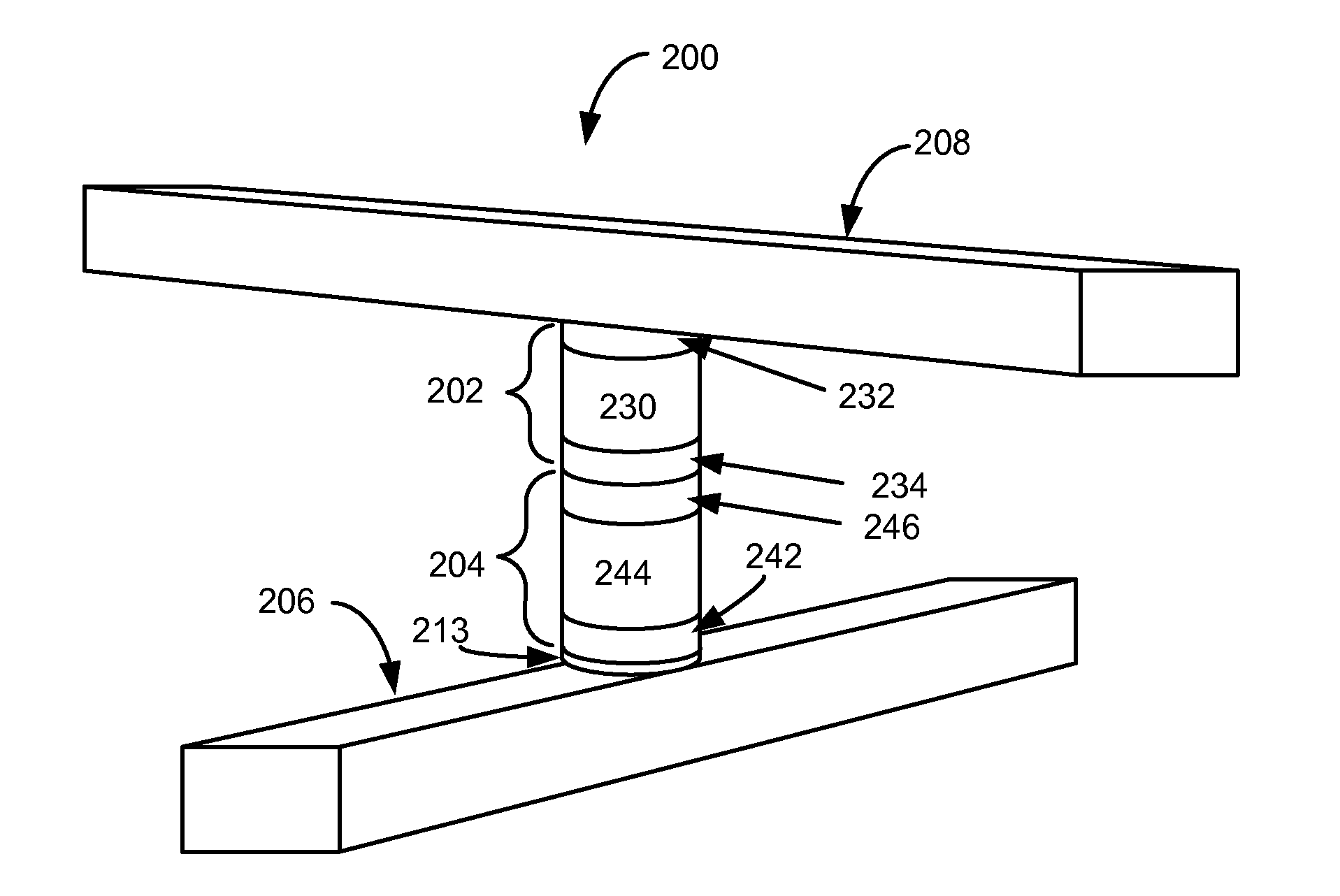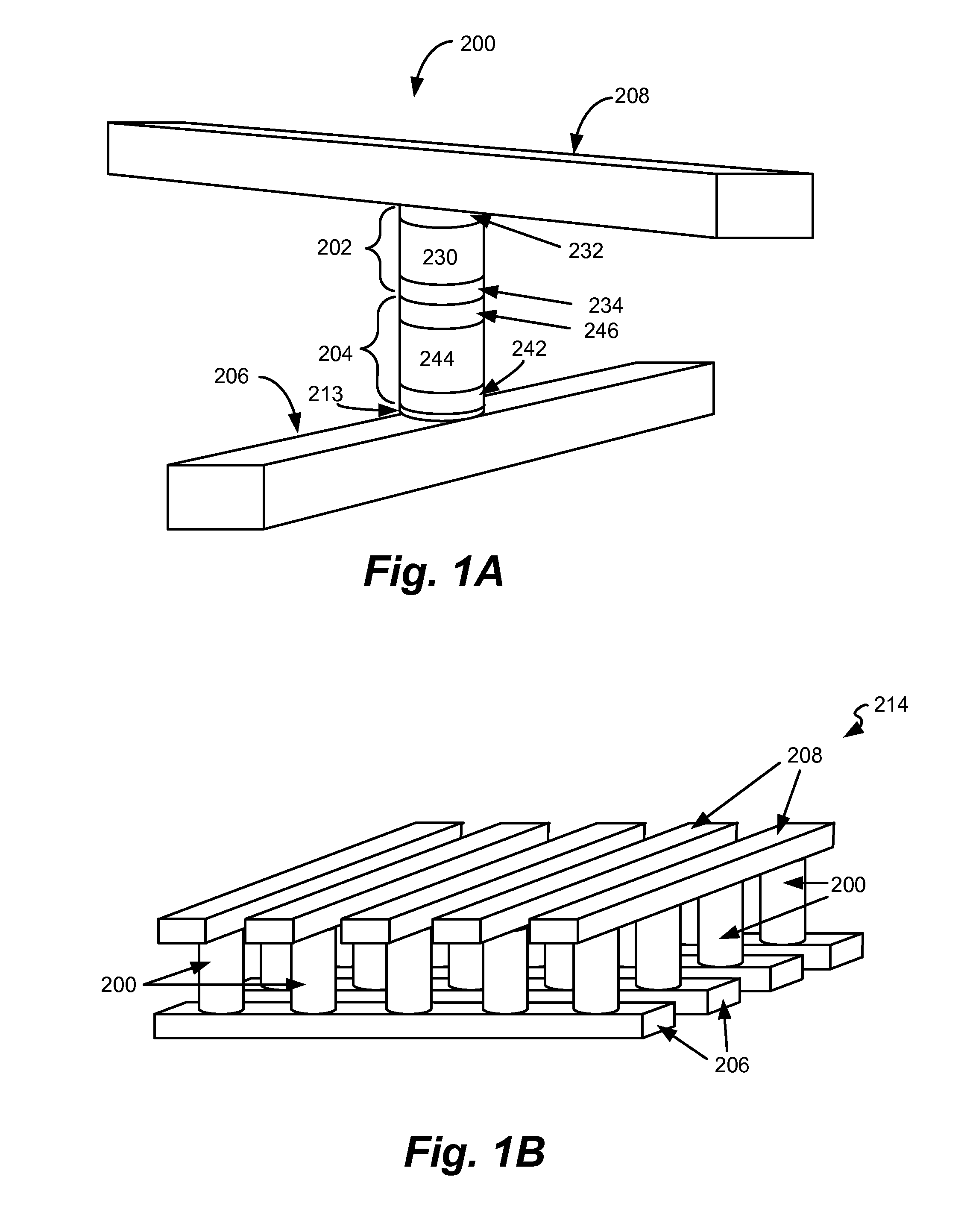Step soft program for reversible resistivity-switching elements
a resistivity switching element and soft program technology, applied in the field of nonvolatile data storage, can solve the problems of increasing power consumption, increasing voltage and current requirements of supporting circuits, and conventional techniques that do not achieve tight resistance distribution
- Summary
- Abstract
- Description
- Claims
- Application Information
AI Technical Summary
Problems solved by technology
Method used
Image
Examples
Embodiment Construction
[0033]A method and apparatus for operating non-volatile storage having memory cells with reversible resistivity-switching elements is described herein. Techniques disclosed herein may provide a tight resistance distribution of reversible resistivity memory cells after a programming operation. Techniques may be able to use a lower maximum programming voltage, for at least some of the programming operations. Techniques may be able to use a lower maximum programming current, for at least some of the programming operations. Read instability may be reduced. Endurance performance may be improved.
[0034]Techniques disclosed herein may be used when FORMING, RESETTING, or SETTING memory cells. Herein, the term“programming operation” may include, but is not limited to, FORMING, RESETTING, or SETTING. In some embodiments, one or more programming conditions to apply to a memory cell having a reversible resistivity-switching element are determined based on its resistance. The determination of one...
PUM
 Login to View More
Login to View More Abstract
Description
Claims
Application Information
 Login to View More
Login to View More - R&D
- Intellectual Property
- Life Sciences
- Materials
- Tech Scout
- Unparalleled Data Quality
- Higher Quality Content
- 60% Fewer Hallucinations
Browse by: Latest US Patents, China's latest patents, Technical Efficacy Thesaurus, Application Domain, Technology Topic, Popular Technical Reports.
© 2025 PatSnap. All rights reserved.Legal|Privacy policy|Modern Slavery Act Transparency Statement|Sitemap|About US| Contact US: help@patsnap.com



